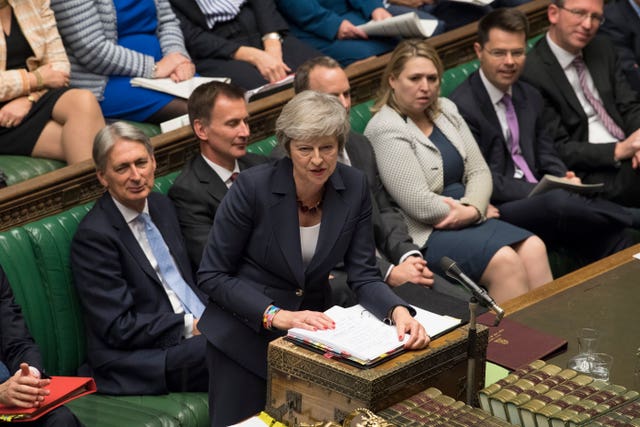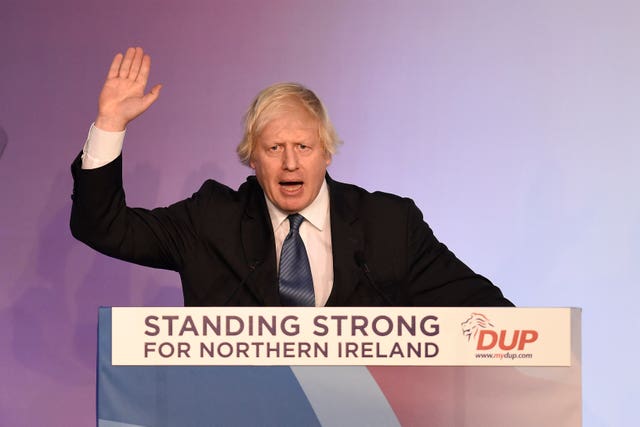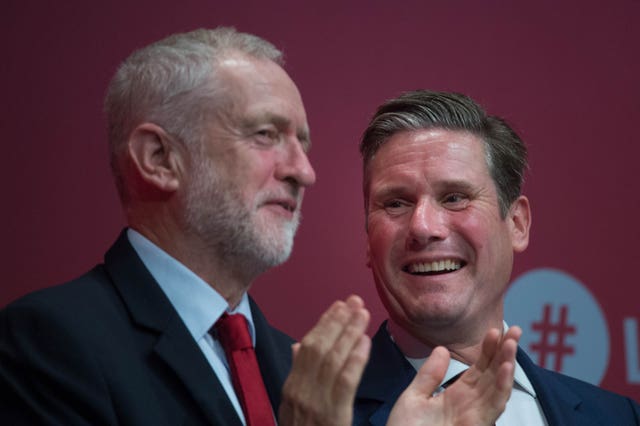
Theresa May’s Brexit deal goes before EU leaders on Sunday, when they are expected to approve two documents that have been two years in the making.
After clearing a major hurdle, here is what lies ahead for the deal, the Prime Minister and Britain’s exit from the EU.
Battle for parliamentary approval
 Parliament">Theresa May is hoping to get her Brexit deal through Parliament (Parliament/Mark Duffy)
Parliament">Theresa May is hoping to get her Brexit deal through Parliament (Parliament/Mark Duffy)
Many thought it would be near-impossible for Mrs May to secure consensus among all of the EU’s leaders back when Article 50 was triggered on March 29 2017. Furthermore, few predicted that one of the biggest threats to the deal would eventually come from Brexiteer MPs when, in the early stages of the negotiations, Remain campaigners took the Government to the highest court in the land in order to secure a meaningful vote for MPs. This Commons vote is the major hurdle Mrs May must now overcome if her hard-won deal is to be enshrined in UK law. The vote is expected to take place before MPs break for Christmas in December.
Eurosceptic rejection
 Boris Johnson speaking during the DUP annual conference in Belfast (Michael Cooper/PA)
Boris Johnson speaking during the DUP annual conference in Belfast (Michael Cooper/PA)
Led by figures including Boris Johnson and Jacob Rees-Mogg, a swathe of Brexiteer Tories have rejected Mrs May’s deal and called for it to be renegotiated. This raises the prospect of some of Mrs May’s own MPs voting against the agreement when it goes before the Commons. Appearing at the DUP conference on Saturday, Mr Johnson said the deal will leave the UK a “satellite state” of the EU. In the Sunday Express Mr Rees-Mogg said the deal “does not deliver” on Brexit and “instead of taking back control, in some areas it will leave the United Kingdom with even less control than it currently has: the vassal state”.
DUP opposition
LIVE: Watch Rt Hon Arlene Foster MLA – Party Leader’s Address at the #DUP18 Party Conference in Belfast > https://w… https://t.co/yhGY7iTE4N
— DUP (@duponline) November 24, 2018
The Eurosceptics’ rejection of the plans stems in large part from the deal’s backstop provision for the border between the Republic of Ireland and Northern Ireland. Hardline Brexiteers say it risks the UK being unable to ever fully leave the EU. The DUP say the backstop would see Northern Ireland adopt a different regulatory regime to Great Britain if a wider UK/EU trade deal fails to materialise. DUP leader Arlene Foster said the draft deal fails to protect the Union. With 10 MPs in the Commons, their support could be crucial for Mrs May’s deal to pass.
Labour opposition
 Jeremy Corbyn with shadow Brexit secretary Sir Keir Starmer">Labour leader Jeremy Corbyn with shadow Brexit secretary Sir Keir Starmer (Stefan Rousseau/PA)
Jeremy Corbyn with shadow Brexit secretary Sir Keir Starmer">Labour leader Jeremy Corbyn with shadow Brexit secretary Sir Keir Starmer (Stefan Rousseau/PA)
Labour repeatedly warned that they would vote against any deal that does not pass six tests. Among the requirements are that it delivers the “exact same” benefits, fair management of migration and the protection of workers’ rights and protections. On Wednesday Jeremy Corbyn branded the deal as “botched” and a “leap in the dark”. “(It) breaches the Prime Minister’s own red lines and does not meet our six tests”, he said.
Uncertain future
My letter to the nation. #BackTheBrexitDeal pic.twitter.com/VGzNeeXoqg
— Theresa May (@theresa_may) November 24, 2018
There is growing speculation that the deal will be voted down by MPs in its current form, although the PM is expected to have several weeks to build support. Aware of the widespread opposition among MPs, Mrs May is appealing directly to the public. On Saturday she issued a “letter to the nation” in which she urged Britons to get behind the deal. She has also sought the backing of business in an effort to encourage MPs to support the deal.
What happens if it is voted down?
BFE: Have you written, emailed or visited YOUR MP yet? Have you told them what you think of May's 'Deal' for your country? The easy to use new #PeoplesVote tool makes it a doddle! Check it out now and get writing! There's never been a BIGGER DEAL! https://t.co/LSNhgDbSnJ 👍 pic.twitter.com/9VtW2Mvq4H
— Britain for Europe (@_Britain4Europe) November 23, 2018
MPs’ rejection of Mrs May’s plan would open up several possibilities – Britain crashing out of the EU with no deal on March 29, Mrs May having to return to the EU to ask for further talks or a so-called People’s Vote that could see Brexit halted altogether. On Saturday Chancellor Philip Hammond warned that rejecting the deal would leave Britain in “uncharted territory”, while he said a no-deal Brexit would unleash “economic chaos”.
Could another deal be struck?
The Sunday Telegraph front page: Secret 'Plan B' for Brexit #tomorrowspaperstoday pic.twitter.com/o0ciuKaMbw
— The Telegraph (@Telegraph) November 24, 2018
EU leaders have warned they will not return to the negotiating table, however a no-deal Brexit would have damaging consequences for both the UK and EU countries. If talks are re-opened it will likely mean extending the Article 50 period well beyond March 29. According to reports, officials in Westminster and Brussels are continuing to work on plans for alternative arrangements. The Sunday Telegraph reported that “several senior ministers” were working on plans for a Norway-style relationship with the EU.
Brexit: Part two
 Negotiations on how the UK will trade with the EU could run until 2022 (Jane Barlow/PA)
Negotiations on how the UK will trade with the EU could run until 2022 (Jane Barlow/PA)
Negotiations up to this point have related to the arrangements for how Britain’s divorce from the EU will take place. If Mrs May’s divorce deal is passed by Parliament, next comes the long process of agreeing on how the UK will trade with the bloc in the future. Negotiators have until the end of the transition period, which could run until the end of 2022, to strike a deal. If they fail to do so that could mean the imposition of the backstop to ensure no disruption to the Irish border.



Why are you making commenting on The Herald only available to subscribers?
It should have been a safe space for informed debate, somewhere for readers to discuss issues around the biggest stories of the day, but all too often the below the line comments on most websites have become bogged down by off-topic discussions and abuse.
heraldscotland.com is tackling this problem by allowing only subscribers to comment.
We are doing this to improve the experience for our loyal readers and we believe it will reduce the ability of trolls and troublemakers, who occasionally find their way onto our site, to abuse our journalists and readers. We also hope it will help the comments section fulfil its promise as a part of Scotland's conversation with itself.
We are lucky at The Herald. We are read by an informed, educated readership who can add their knowledge and insights to our stories.
That is invaluable.
We are making the subscriber-only change to support our valued readers, who tell us they don't want the site cluttered up with irrelevant comments, untruths and abuse.
In the past, the journalist’s job was to collect and distribute information to the audience. Technology means that readers can shape a discussion. We look forward to hearing from you on heraldscotland.com
Comments & Moderation
Readers’ comments: You are personally liable for the content of any comments you upload to this website, so please act responsibly. We do not pre-moderate or monitor readers’ comments appearing on our websites, but we do post-moderate in response to complaints we receive or otherwise when a potential problem comes to our attention. You can make a complaint by using the ‘report this post’ link . We may then apply our discretion under the user terms to amend or delete comments.
Post moderation is undertaken full-time 9am-6pm on weekdays, and on a part-time basis outwith those hours.
Read the rules here